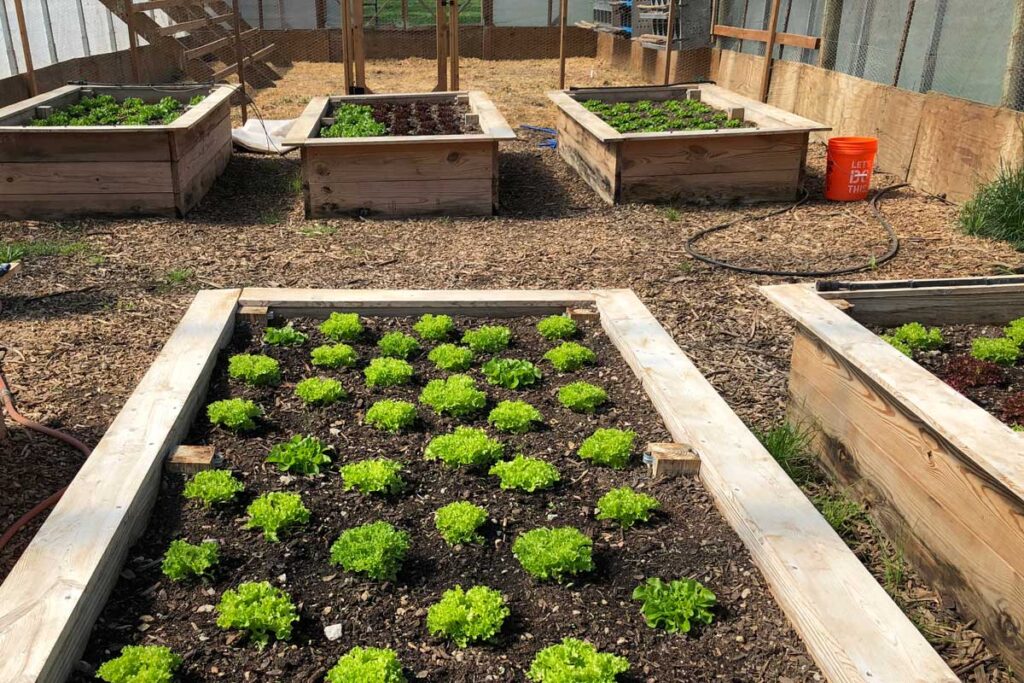Love of Gardening…
If you love planting and gardening, you may already feel the longing for the cold weather to end. However, short days and snow on the ground don’t have to mean you neglect that side of your personality. There are still plenty of ways to exercise your green thumb and keep it in shape for spring.

Try growing plants indoors. You might wind up keeping your indoor garden going all year round, or transfer your young plants outside when the weather permits. You will want to allow enough space and enough light, and choose your plant species wisely.
The Best Indoor Plants
Many people are familiar with the growing trend of fairy gardens. Individuals who dabble in this hobby typically tend to stick to succulents, ivies, and small trees like the ficus. While these plants are generally easy to care for and are great for your indoor environment, they don’t provide you nutrients all year long. Consider replacing house plants with greens, various vegetables and, herbaceous plants.
Growing Leafy Greens
Leafy greens and salad fixings grow readily indoors. Spinach, radishes, and various lettuces are great for indoor gardening and easy to harvest when you’re ready to use it. Tomatoes are wonderful too. The easiest species to care for are grape tomatoes. They ripen quickly and are tasty salad toppings and snacks.

Peppers make another excellent choice. Bell peppers take a while to ripen and require a well-draining pot, but they are easy to grow. With so many different species of peppers, your options are endless. You can grow jalapenos or habaneros to add spice to your dishes. Don’t forget about small sweet peppers, which make great snacks.
Growing Herbaceous Plants
Herbs also make incredible indoor plants. Rosemary, basil, and chives are some of the most commonly used spices and easiest to grow. With proper care all of these herbs grow in such abundance you may end up begging your friends and family to take some. Herbs like Marjoram, thyme, and sage are also good indoor plants to grow. If you don’t cook with these ingredients, often that’s okay. They’ll look lovely on a windowsill, and they’ll be ready for when you need them.
Growing Legumes
Beans do well indoors too. Just give these plants some support. Legumes vine and spread rapidly. The tendrils will need something to wrap around. Purchase a trellis or use string and stakes to support the growth of your green beans or snap peas.
Growing Mushrooms
Mushrooms aren’t the kind of produce you can show off with the rest of your plants, but they grow quite well indoors. Fungi require dark, moist places so your basement or a closet would be the best place to leave them. They don’t need much care just a spritz of water every now and then.
Ample Light for Plants
Naturally, your indoor garden is going to need lots of sunlight. Windows should be your first choice. Making sure your windows aren’t drafty is essential. If too much cold air gets in, the low temperature could kill your plants. If your windows are too drafty but you have a relatively warm basement this area could work as well. This is where a grow light will come in handy. Your plants should fare relatively well without direct sunlight.
Containers, Planters, and Pots
Most plants require good drainage in their soil. Any hardware store sells planters year round. You can buy these with saucers already built in, or you can put rocks in the bottom of your planter to help drain the soil. Most of the time these are relatively cheap, but why not get creative with your plants?
A lot of indoor gardeners like to make their own containers. They do this by building themselves shelving units and indoor hydroponic gardens. Gardeners also do this by upcycling items around the house. If you are growing your plants from seedlings, you can use recycled soda bottles and milk cartons to germinate your seeds. Other individuals have made their containers out of pallets.
A word of wisdom. Make sure the pallets or containers didn’t previously hold anything toxic. For instance, you don’t want to make a planter out of an old bleach bottle.
Pest Control
Aphids, two-spotted spider mites, and fungus gnats are just a few of the pests you may find when growing an indoor garden.
Your first thought might be pesticides. This is an effective way to kill them but keep in mind that you will be ingesting these vegetables yourself. By planting herbs that detract parasites and choosing different planting methods you can kill them or prevent them from ever coming in.
Mint, catnip, and chives are just a few of the herbs you can grow in your garden to repel aphids. Use these herbs in your favorite recipe and grow them to get rid of or prevent your aphid infestation.
If you catch the infestation early, you can pick the aphids or mites off of your plants. Inspect the leaves that have insects on them and remove them as you see them. If the infestation is small, you should be able to stop it before it takes over your entire plant. You may also be able to wipe the bottom of the leaf with a warm, moist paper towel.
For “pests” of the more familial variety, we will dedicate a future post to helping your plants and pets coexist in harmony.
Grow Plants From Seedlings
Fungus gnats usually are found in potting soil which makes these pests hard to prevent. The good news is that they don’t often do a lot of damage to the plant themselves. Aphids and two-spotted spider mites on the other hand usually come from outside plants.
That’s why a lot of gardeners suggest germinating plants on your own. This can be a difficult task if you’re new to the hobby, but it’s incredibly rewarding to see nothing one day and tons of sprouts the next. By germinating seeds yourself, you’re not introducing already infested plants to your garden thereby preventing any infestation from ever starting.
There are tons of great reasons to grow an indoor vegetable garden. It increases the amount of clean oxygen in your home. It’s a great educational experience for your children. Most of all gardening is downright fun and a great way to relieve stress. Besides, who doesn’t love fresh veggies all year long?


 Aberlin Springs Cooking School
Aberlin Springs Cooking School